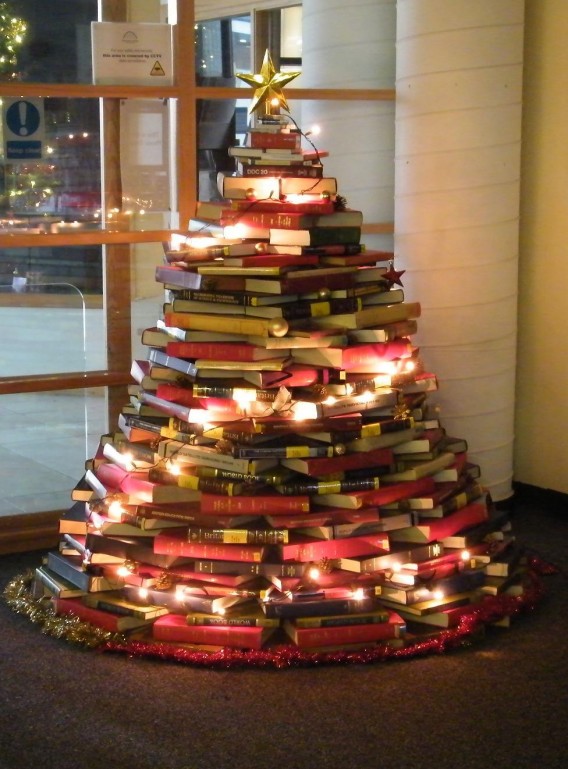A Christmas tree is a decorated tree, usually an evergreen conifer such as spruce, or pine or fir, traditionally associated with the celebration of Christmas.
The first decorated Christmas tree was in Riga, Latvia in 1510.
The first printed reference to Christmas trees appeared in Germany in 1531.
Besides evergreens, other types of trees such as cherry and hawthorns were used as Christmas trees in the past.
Using small candles to light a Christmas tree dates back to the middle of the 17th century.
Thomas Edison’s assistant, Edward Johnson, came up with the idea of electric lights for Christmas trees in 1882. Christmas tree lights were first mass-produced in 1890.
Deodar Cedar – short, bluish-green needles; branches become pendulous at the tips; native to Himalayas; Deodara wood in Asia was used to build temples. In ancient Egypt Dedodara wood was used to make coffins for mummies.
Eastern Red Cedar– leaves are a dark, shiny, green color; sticky to the touch; good scent; can dry out quickly; may last just 2-3 weeks; the berries of Juniperus species are used to provide gin with its characteristic flavor. Cedar chests and lined closets prevent moth damage to wool clothing because the volatile cedar oil is a natural insecticide.
Leyland Cypress – foliage is dark green to gray color; has upright branches with a feathery appearance; has a light scent; good for people with allergies to other Christmas tree types. One of the most sought after Christmas trees in the Southeastern United States.
Balsam Fir – ¾” to 1 ½” short, flat, long lasting needles that are rounded at the tip; nice, dark green color with silvery cast and fragrant. Named for the balsam or resin found in blisters on bark. Resin is used to make microscope slides and was sold like chewing gum; used to treat wounds in Civil War. Abies ancient name – rising or tall tree, name for the European fir. balsamea balsam-producing.
Douglas-Fir – good fragrance; holds blue to dark green; 1″ to 1 ½” needles; needles have one of the best aromas among Christmas trees when crushed. Named after David Douglas who studied the tree in the 1800’s; good conical shape; can live for a thousand years. Douglas-fir is considered the second tallest tree in North America, after redwood and can grow over 300 ft. tall.
Fraser Fir – dark green, flattened needles; ½ to 1 inch long; good needle retention; nice scent; pyramid-shaped strong branches which turn upward. Named for a botanist, John Fraser, who explored the southern Appalachians in the late 1700’s. Growing Fraser fir for Christmas trees and wreaths is a multi-million dollar business in the southern Appalachians.
Grand Fir – shiny, dark green needles about 1″ – 1 1/2 ” long; the needles when crushed, give off a citrusy smell. On Mt. Hood, Oregon, early settlers tied ropes around grand firs to slow down and control their descent. Rope burned trees from this era are still standing. Grand fir’s sweet pitch was once chewed by Native Americans.
Noble Fir – one inch long, bluish-green needles with a silvery appearance; has short, stiff branches; great for heavier ornaments; keeps well; is used to make wreaths, door swags and garland.
Afghan Pine – soft, short needles with sturdy branches; open appearance; mild fragrance; keeps well; grown in Texas; native to Afghanistan, Russia & Pakistan
Austrian Pine – dark green needles, 4 to 6 inches long; retains needles well; moderate fragrance.
Virginia Pine – dark green needles are 1 ½” – 3″ long in twisted pairs; strong branches enabling it to hold heavy ornaments; strong aromatic pine scent; a popular southern Christmas tree. Virginia pine is an aggressive pioneer that produces pulpwood more rapidly than most pines on poor sites. It is also useful for mine land reclamation.











